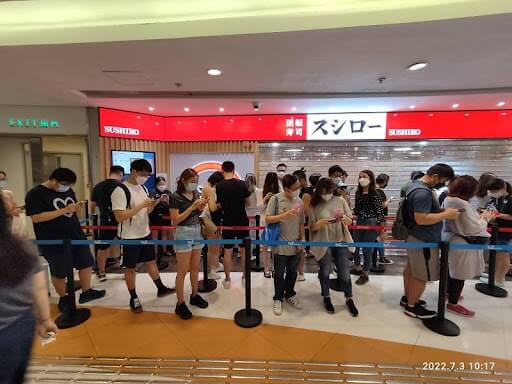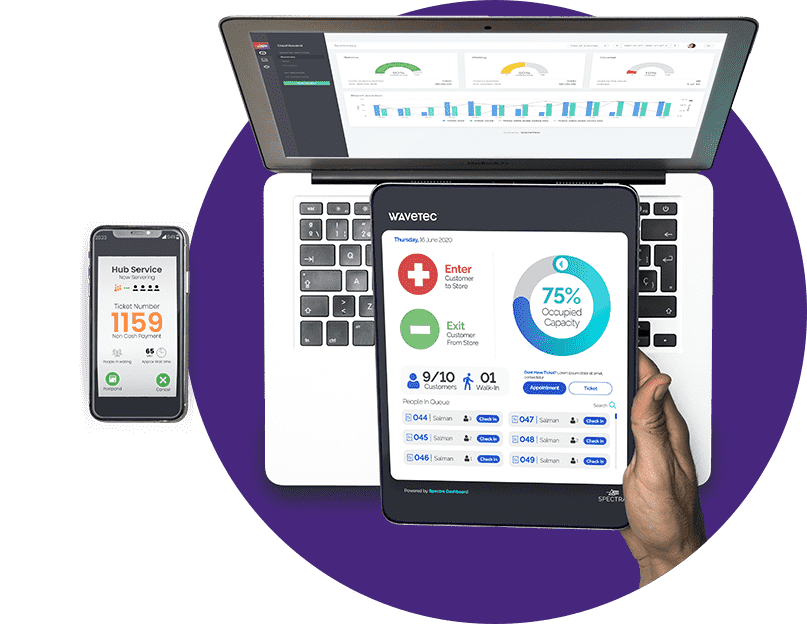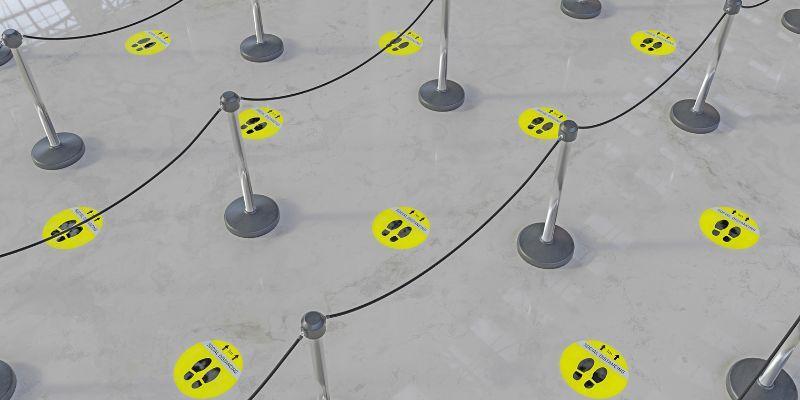Efficient scheduling is of paramount importance across various industries. It ensures that services are delivered promptly and without unnecessary delays. Two key strategies in achieving this are Queue Management vs Appointment Scheduling.
A Queue Management System involves organizing and serving customers in the order they arrive, similar to forming a structured line. This method is commonly employed in places such as banks, grocery stores, and retail outlets where numerous customers require assistance.
On the other hand, Appointment Scheduling takes a more precise approach. It allows customers to reserve specific time slots in advance, guaranteeing them prompt service. This method is beneficial in settings like doctor’s offices, salons, and professional services where precision and punctuality are crucial.
Both Queue Management and Appointment Scheduling have their merits and are tailored to suit different business environments. By understanding the distinct advantages of each, businesses can select the approach that best aligns with their operational needs and customer service objectives.
In this article, we will dive into the difference between Queue Management and Appointment Scheduling, shedding light on their significance under various factors.
Comparison between Queue Management and Appointment Scheduling
Queue Management and Appointment Scheduling are essential for efficient customer service. Queue Management organizes customers in a linear order, which is common in places like banks.
Appointment Scheduling allows reservations for timely service, used in settings like doctor’s offices. Understanding these strategies is crucial for enhancing customer experience. Let’s explore the differences and implementation considerations.
1. Wait Time Management
Wait Time Management is a critical aspect of customer service in various industries. It involves strategies to minimize the time customers spend waiting for service, ultimately enhancing their satisfaction and overall experience.
Queue Management
Queue Management is a widely adopted approach to Wait Time Management. It involves organizing and serving customers in the order they arrive. This system is akin to forming a structured line commonly observed in places like banks, grocery stores, and retail outlets.
In recent times, technology has introduced the concept of online queuing system, allowing customers to wait digitally, receiving updates about their turn without having to stand in line physically.
Appointment Scheduling
Appointment Scheduling takes a more proactive approach to Wait Time Management. It allows customers to reserve specific time slots in advance, ensuring they receive dedicated service at their chosen time. This method is particularly useful in settings like doctor’s offices, salons, and professional services where precision and punctuality are crucial.
2. Customer Experience and Convenience
In today’s fast-paced world, providing an exceptional customer experience and ensuring convenience are paramount for businesses.
Efficient management of queues and appointments plays a crucial role in achieving these goals, and this comparison between Queue Management and Appointment Scheduling will highlight just that.
Queue Management
Queue Management is a fundamental strategy employed by businesses to streamline customer flow. It involves organizing and serving customers in the order they arrive.
This system enhances convenience by reducing wait times and ensuring fairness. With the advent of technology, virtual queueing has emerged as an innovative solution, allowing customers to digitally hold their place in line, receiving updates on their status in real-time.
Appointment Scheduling
On the other hand, Appointment Scheduling offers a more personalized approach to customer service. It enables customers to reserve specific time slots in advance, ensuring dedicated attention and service at their preferred time.
This method is highly advantageous for businesses where precise timing is crucial, such as healthcare facilities, salons, and professional services.
3. Resource Allocation and Operational Efficiency

When it comes to business operations, resource allocation, and operational efficiency are pivotal for success. Effective management of queues and appointments plays a crucial role in achieving these objectives, as we will see in this comparison between queue management and appointment scheduling.
Queue Management
Queue Management is a fundamental tool for businesses aiming to optimize resource allocation. It involves organizing and serving customers in the order they arrive, ensuring fairness and efficient use of resources.
Through the application of business analytics, businesses can glean insights into customer flow patterns, enabling them to allocate staff and resources effectively. Additionally, the emergence of virtual queueing technology further enhances operational efficiency by minimizing physical wait times.
Appointment Scheduling
Appointment Scheduling offers a proactive approach to resource allocation. Businesses can allocate resources with precision by allowing customers to reserve specific time slots. This method is particularly beneficial in settings where strict time management is essential, such as healthcare facilities and professional services.
Business analytics allows businesses to analyze appointment trends and optimize staff scheduling and resource allocation.
4. Handling Unpredictable Scenarios
In the dynamic landscape of customer service, businesses often face unexpected situations. Effectively managing queues and appointments is crucial in navigating these scenarios.
Queue Management
Queue Management provides a flexible approach to handling unpredictable situations. By organizing customers based on arrival, it adapts to changing circumstances. This method allows businesses to serve customers efficiently even when walk-in traffic is high or unexpected rushes occur.
Additionally, with the aid of technology, virtual queueing can further enhance adaptability, ensuring customers are informed and attended to promptly.
Appointment Scheduling
Appointment Scheduling, especially cloud appointments, offers a structured solution to potential disruptions. Businesses can allocate resources effectively by allowing customers to reserve specific time slots.
This method minimizes the impact of unforeseen events, ensuring that each customer receives dedicated attention at their appointed time. This approach is particularly beneficial in industries where precision and punctuality are paramount.
5. Customer No-Shows

When it comes to customer service, dealing with no-shows is a common challenge—both Queue Management and Appointment Scheduling offer unique approaches to address this issue.
Queue Management
In the context of no-shows, Queue Management provides a straightforward solution. It allows businesses to serve customers based on their arrival order. While it may not entirely eliminate no-shows, it provides a fair and efficient way to manage them.
Employing people counting technology can aid in tracking customer flow, ensuring resources are allocated effectively.
Appointment Scheduling
Appointment Scheduling presents a proactive strategy for mitigating no-shows. Businesses reduce the likelihood of missed appointments by allowing customers to reserve specific time slots.
This method provides a structured approach that minimizes the impact of no-shows, ensuring that resources are allocated to customers who have committed to their appointments.
6. Cost Considerations
When it comes to managing customer flow, businesses must take into account the associated costs. Both Queue Management and Appointment Scheduling come with their own financial implications.
Queue Management
While effective in many scenarios, Queue Management tends to be a more budget-friendly option. It requires less technological infrastructure and can often be implemented with minimal investment.
Businesses can employ simple waiting management systems that rely on basic digital signage and staff organization. People counting technology can be integrated for a more sophisticated approach, but even this tends to be relatively cost-effective.
Appointment Scheduling
Appointment Scheduling may entail a higher initial investment due to the need for scheduling software or systems. However, it can lead to long-term cost savings.
Businesses can optimize staff schedules and minimize idle time by allocating resources based on pre-scheduled appointments. This efficiency can translate to lower labor costs in the long run. Additionally, it can also reduce the risk of overstaffing during low-demand periods.
7. Appointment Booking Convenience
In the customer service sector, convenience is key. The comparison between queue management and appointment scheduling aims to highlight the ease of booking appointments for customers that these bring to the table.
Queue Management
Queue Management, while effective for walk-in traffic, may not provide the same level of convenience when it comes to booking appointments.
It primarily focuses on serving customers in the order they arrive, which may not align with their preferred time slots. However, with the integration of remote queueing options, customers can join a digital queue remotely, receiving updates on their status, offering a level of convenience in avoiding physical wait times.
Appointment Scheduling
Appointment Scheduling excels in providing convenience for customers. It allows them to reserve specific time slots that align with their schedules, ensuring they receive dedicated attention at their chosen time.
This method significantly reduces wait times and provides a more personalized experience. Customers appreciate the ability to plan their visit in advance, enhancing their overall satisfaction and positively impacting customer feedback.
8. Data Collection and Analysis

For customer service, gathering and analyzing data is crucial for informed decision-making. Both Queue Management and Appointment Scheduling offer unique data collection and analysis opportunities.
Queue Management
Queue Management provides valuable data on customer flow and wait times. Businesses can identify peak hours and allocate resources by tracking the number of customers served and their waiting durations. This data is beneficial for optimizing walk-in appointments, as it helps in determining the ideal staffing levels.
Appointment Scheduling
Appointment Scheduling offers insights into customer preferences and booking behavior. Data on the types of appointments (Walk-In vs Same Day) and their distribution can be analyzed to refine scheduling policies. For instance, understanding the demand for same-day appointments can inform staff allocation for these slots.
9. Scalability
When it comes to accommodating growth and expanding operations, businesses must consider the scalability of their customer service strategies. Comparison between Queue Management and Appointment Scheduling reveals that each presents unique factors to weigh in this regard.
Queue Management
Queue Management is generally considered to be more easily scalable in high-traffic environments. It can handle a large volume of walk-in customers efficiently, making it suitable for businesses experiencing rapid growth.
With the integration of technology and virtual queueing, scalability becomes even more feasible, as it allows for seamless expansion without the need for significant infrastructure changes.
Appointment Scheduling
While effective for personalized service, appointment scheduling may require more careful consideration when scaling operations. It relies on the allocation of specific time slots, which may become a limiting factor during periods of high demand.
Businesses need to plan and manage their appointment schedules to ensure scalability carefully. Additionally, the choice between walk-ins and same-day appointments can impact scalability, as accommodating a surge in walk-ins may require adjustments in staffing and resources.
10. Integration with Technology
In today’s digital age, the seamless integration of technology is crucial for optimizing customer service. Both Queue Management and Appointment Scheduling offer opportunities to leverage technological advancements.
Queue Management
Queue Management systems have seen significant advancements in technology integration. Businesses can streamline customer flow and enhance convenience from digital signage to virtual queueing solutions.
People counting technology aids in tracking customer traffic, allowing for real-time adjustments in staffing levels. This integration with technology ensures a more efficient and customer-friendly experience.
Appointment Scheduling
Appointment Scheduling heavily relies on technology for its effectiveness. Scheduling software or platforms allow customers to book appointments online, providing convenience and accessibility.
Additionally, businesses can use these systems to send reminders and notifications, reducing the likelihood of no-shows. Integrating with Customer Relationship Management (CRM) software further enhances the personalized experience for customers.
Final Words
In customer service, choosing between Queue Management vs Appointment Scheduling is pivotal. It’s a decision that hinges on the nature of the business, its customer base, and operational goals.
Queue Management, with its emphasis on walk-ins and real-time service, excels in high-traffic environments. Its simplicity and cost-effectiveness make it an attractive option.
On the other hand, Appointment Scheduling offers personalized service, allowing customers to choose convenient time slots. It’s particularly beneficial for businesses requiring precise time management.
Ultimately, the decision between Queue Management vs. Appointment Scheduling is about finding the right balance between efficiency and customization. Both methods have their strengths, and a thoughtful consideration of their merits is key.
With the right approach, businesses can optimize their customer service, leading to higher satisfaction and operational success.
BOOK A FREE DEMO





